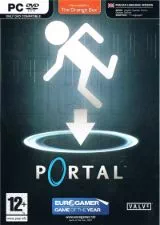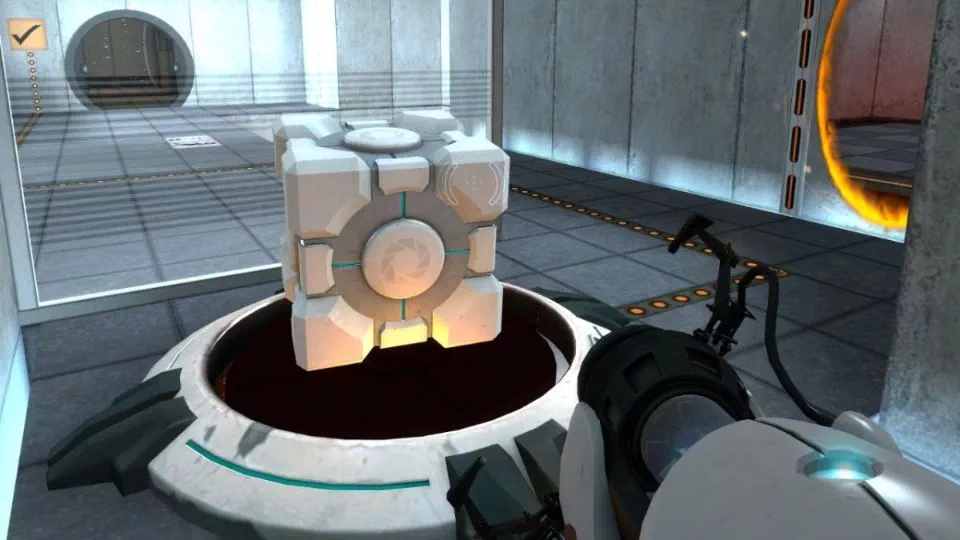Portal II PC PS3
Introduction After playing through Portal an...
By Zora Flatley2472

0

Introduction
Portal is a first-person puzzle game developed by Valve and released in 2007. The game is primarily focused on maneuvering through a series of artificial-looking levels in a laboratory using the “portal gun” a device that creates portals for the player to travel through.
The game is relatively short when compared to other games, but that’s really a product of its very linear narrative. When I last played it, it took me around an hour and a half, and new players might have to spend double that time solving the various puzzles.
It’s really an immersive game, and it’s very easy for the time to fly by and for players to finish it in a single sitting. Portal is generally considered a masterpiece, with a 90% on Metacritic, and many critics considering it the greatest game of all time. I don’t personally concur with this, but there are several good reasons for that title being up for consideration.
Gameplay
As the name suggests, Portal is all about portals. At the beginning of the game, you start by waking up in a bare, glass-walled cell. A futuristic cot and a radio playing some extremely invigorating funk music are the only furniture, besides a toilet. As you wake up you are greeted by an enthusiastic, if not very human, -sounding voiceover.
Artificial intelligence appears to be managing your stay in the Aperture Science Laboratory, where you will be doing some “testing” for them, whatever that means. An orange-ringed portal appears in the wall of the cell, and upon walking out, you appear in a blue-ringed portal on the outside of the cell. And here begins the rest of the game.
The power of portals quickly reaches your hands and you have to complete the twenty or so challenges the AI has set up for you. The idea is an incredible one for a puzzle game since it forces you to change your perception of space pretty drastically to complete most of the puzzles, a lot of which involve maneuvering boxes or laser beams to power the door to the puzzle chamber so you can advance.
The puzzles are very different, a lot of the time actually “testing” the player, forcing the player to be creative in creating the two available portals to them, placing in different places for example, or requiring the player to be meticulous in timing the placement of the portals to finish the puzzles.
But, no, that’s not the end of the game. As the player progresses, a series of bewildering events occur, as the AI occasionally garbles its speech (creating extremely comical puns and jokes along the way), and strange messages appear scrawled in hidden alcoves behind testing equipment.
This is actually the source of the famous line “the cake is a lie,” and I still remember the growing sense of horror I was getting as I saw the various creepy messages written on the walls in a color that looked terribly similar to blood. But I digress.
The puzzles get harder and harder in difficulty as the game progresses until the player gets a wonderful surprise at the end of the puzzles. To cut a long story short, it turns out that there is no cake, and that the player is being driven via mechanized platform into an incinerator. And then, the chase begins, as the player uses their newfound portal skills to escape the lab.

The gameplay overall is pretty solid, transitioning from neat, self-contained lab puzzles, to a well-contrasting escape attempt from the lab through all the maintenance areas throughout the rest of the lab.
I will note that by the time I reached the incinerator I was thoroughly prepared for the game to end, so when it didn’t, I had this confusing sense of having finished the game but not achieved closure. It was only temporary though, since, although the escape part of the game was relatively lengthy, the end was pretty satisfying.
Technicals: Sound, Graphics, and Mechanics
Let’s make this very clear. Portal is only successful because its puzzles are innovative and explore a fresh concept, and because its plot is fun to play through. It successfully created a compact, interesting adventure that can easily be completed in a few hours, and provides enough content for years of discussion afterward.
But, unfortunately, Portal’s graphics and sound don’t really hold up to scrutiny, especially today. Sure, it’s playable, but the room designs are really basic and boring, and even the later levels during the escape phase are pretty bland, with regular old pipes, walls, and broken fences.
There’s little to no music, besides the funky jazz-pop hybrid that emanates from the radios that the player can find spread throughout the map, and the sounds are pretty normal throughout the game. Portal, being a puzzle game, doesn’t need much more than movement, pickup, and portal launch mechanics, which I guess makes sense, but it really does make me wonder at the potential that it had.
Just this one simple concept could have gone miles with a proper budget and a larger game to play around in, but I guess that’s where Portal 2, went. In any case, Portal is still playable, it doesn’t really need fancy graphics or mechanics, but it won’t blow you away with its graphics or responsive control schemes.
Portal is actually built on the Source engine, the same engine used for Half-Life 2, and players of Half-Life 2 will notice that the portal gun functions pretty similarly to the gravity gun from Half-Life 2. Similarly, most of the game elements feel similar to Half-Life 2, although the games themselves are quite different.
The one mechanical element of Portal that I felt could really use work was the movement. Obviously, first-person games make it difficult to work with movement in a realistic way, but in a game like Portal where movement and positioning precision are paramount to perfecting Portal, perhaps movement should have gotten a bit more attention from the developers.
Conclusion
Portal is quite an intelligent time-killer. I wouldn’t say it’s my favorite game of all time or the best out there, but it does have a highly unique concept which it applies incredibly well to its different puzzles.
Players will often have to stretch their imaginations and limitations to beat all the levels, which does make the game successful and fulfilling to play through at the end of the day.
Updated 4 years ago